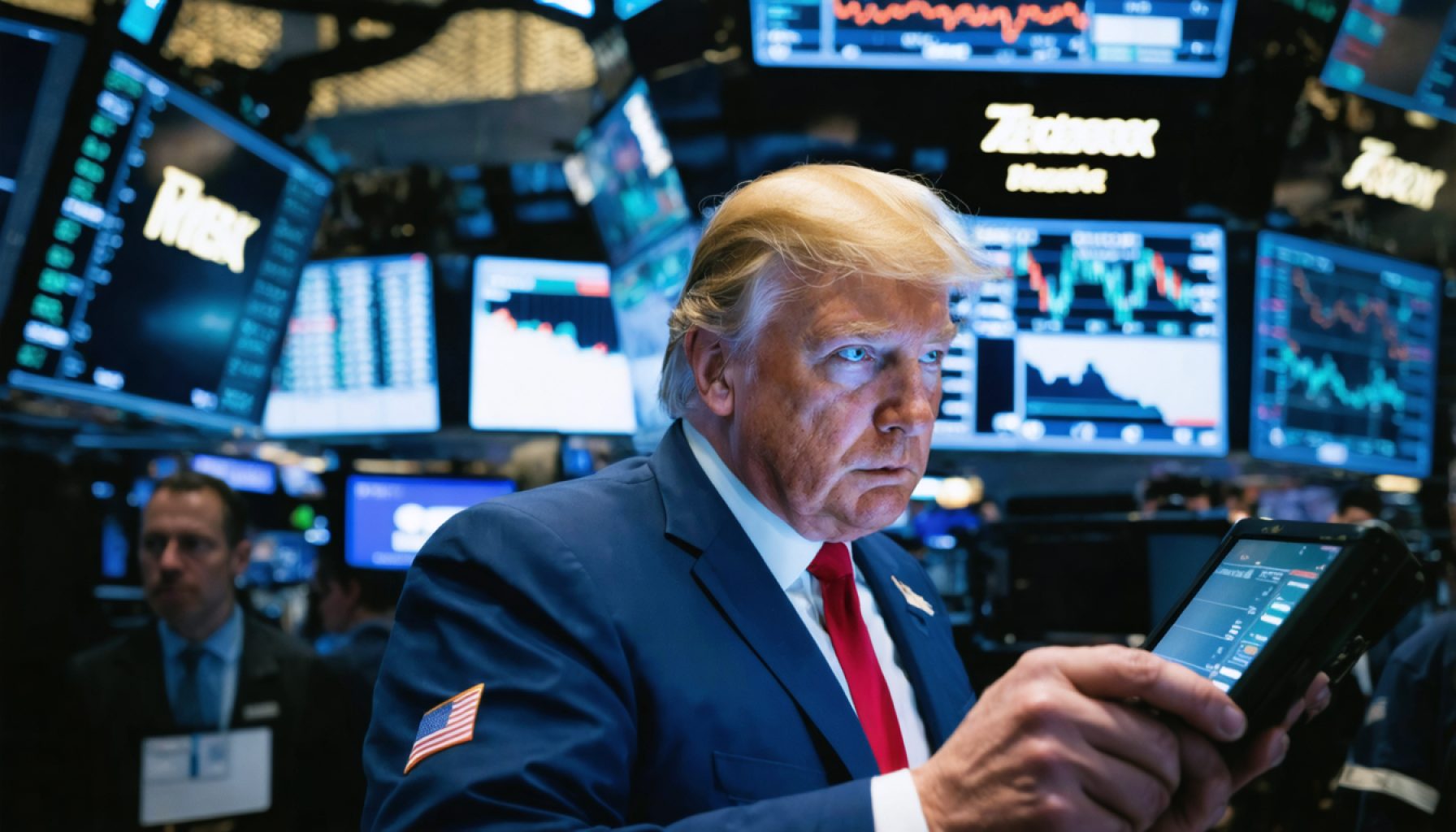- China’s tariffs on U.S. imports have increased to 125%, heightening the trade war and causing market instability.
- The Dow Jones fell by 306 points, with the S&P 500 and Nasdaq dropping by 0.7% and 0.4%, reflecting investor uncertainty.
- Rising gold prices and a weakened U.S. dollar indicate a search for safe havens in the face of economic unpredictability.
- The escalating trade conflict underscores the fragile international economic balance and its profound market implications.
- Economic policies’ global impacts remind us of the shared fates and interconnectedness of world economies.
- Adaptability and resilience are essential as markets navigate the uncertain and rapidly evolving financial landscape.
Wall Street awakened to a storm of uncertainty as the U.S. and China exchanged fierce economic volleys, rattling once-stable financial waters. China’s bold move to amplify tariffs on U.S. imports to a staggering 125% has flung global markets into a state of unease, painting a jittery picture for investors. This escalation in the trade war has sent ripples through the financial landscape, putting stocks on shaky ground just as they seemed to be treading towards stability.
On this tumultuous Friday, the Dow Jones Industrial Average plunged by 306 points at the start, signaling that the economic terrain is far from stable. The S&P 500 and the Nasdaq Composite joined the downward slide, off by 0.7% and 0.4% respectively, indicating a market struggling to find its footing. These figures underscore the fragility that has crept into the heart of American financial markets, threatening to unravel the middle-of-the-week gains spurred by presidential halts on non-China tariffs.
The market’s current choreography paints a vivid portrait of anxiety. Gold prices have surged, often a beacon in stormy financial seas, as investors seek sanctuary amid the prevailing winds of economic unpredictability. Parallelly, a weakened U.S. dollar tells a tale of dwindling confidence, echoing the trepidation that has engulfed global trade scenarios.
As traders, analysts, and everyday investors digest these developments, there’s an underlying theme that resonates with urgency: the intricate balance of international commerce has turned into a high-stakes chess match. The renewed tariff sparring hints at profound economic implications, as major players reconsider their positions in an ever-evolving global marketplace.
This unfolding drama serves as a stark reminder of the intertwined fates that global economies share. While the political landscape shifts and countries lock horns over tariffs, the intrinsic message is clear: economic policies have far-reaching impacts that reverberate through markets, echoing in the lives of individuals worldwide.
In navigating these turbulent times, the focus shifts to adaptability and resilience. Recognizing the complexities and anticipating the moves on this vast economic chessboard may offer the only solace in a world where the financial future seems increasingly unpredictable.
How the U.S.-China Trade War is Shaping Global Markets: What You Need to Know
Understanding the Impact of the U.S.-China Trade War
The escalating trade tensions between the United States and China have significant implications for global financial markets. With China’s recent decision to increase tariffs on U.S. imports to 125%, market volatility is at an all-time high. This move not only affects stock indices like the Dow Jones Industrial Average, S&P 500, and Nasdaq Composite but also ripples through commodities markets, currency values, and investor sentiment.
Current Market Effects
1. Stock Market Turbulence: The immediate result of these heightened tariffs has been a sharp decline in major U.S. stock indices. For instance, the Dow Jones Industrial Average’s drop of 306 points signifies investor unease and predicts further market instability.
2. Commodities Surge: Gold prices have risen as traders seek safe-haven assets. This is a common response in times of economic uncertainty, as seen historically during geopolitical tensions or economic downturns.
3. Currency Fluctuations: The U.S. dollar’s weakening reflects decreased investor confidence. As a barometer of economic strength, shifts in the dollar can influence global purchasing power and trade balances.
Real-World Use Cases
– Supply Chain Adjustments: Businesses reliant on both U.S. and Chinese markets are reevaluating their supply chains to mitigate tariff impacts, exploring alternative manufacturing hubs in Southeast Asia and beyond.
– Consumer Goods Pricing: The increased tariffs are likely to lead to higher prices for consumer goods, affecting everything from electronics to clothing.
– Investment Strategies: Investors are advised to diversify portfolios and incorporate risk management strategies, such as putting more emphasis on bonds and international equities.
Market Predictions and Trends
Experts suggest that this economic standoff could lead to prolonged instability. However, the situation may also encourage countries to pivot towards more regional trade agreements, fostering a new era of international economic alignments.
Reviews and Comparisons
– Economic Models: Analysts compare the current trade tensions with past conflicts, such as U.S.-Japan restrictions in the 1980s, noting differences in economic scale and global interconnectedness today.
– Tariff Impacts: Studies have shown that increased tariffs can lead to reduced GDP growth and higher inflation rates, affecting long-term economic health (Source: International Monetary Fund).
Pros and Cons Overview
– Pros:
– Potential renegotiation of trade terms could lead to fairer practices.
– Encourages innovation as countries seek self-sufficiency.
– Cons:
– Short-term market instability and increased costs for consumers.
– Strained international relations could affect global cooperation on key issues like climate change and security.
Actionable Recommendations
– For Investors: Diversify investments to hedge against risk and consider exposure to emerging markets which may benefit from the shift in global trade dynamics.
– For Businesses: Conduct a thorough review of supply chains and explore alternatives to mitigate the impact of tariffs.
– For Consumers: Anticipate potential price increases and budget accordingly, focusing on essential purchases.
To stay informed about ongoing economic changes, financial authorities like the Federal Reserve and organizations such as the OECD offer updates on policy impacts and forecasts.
As global economies brace for continued changes, adaptability and strategic foresight remain crucial in navigating the challenges posed by the U.S.-China trade war.
